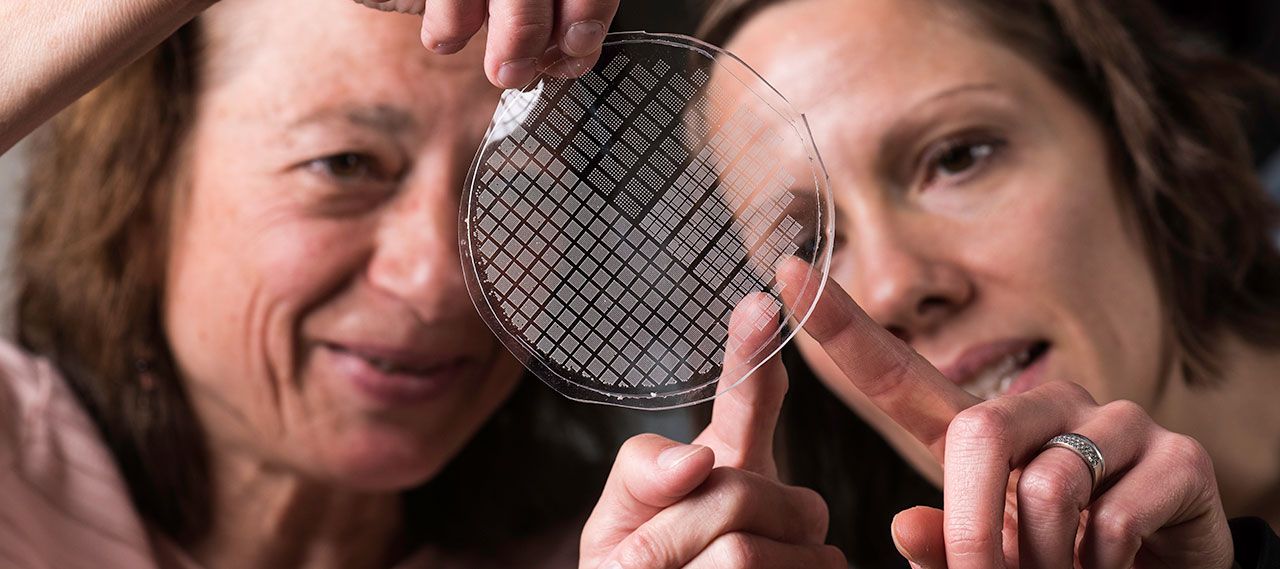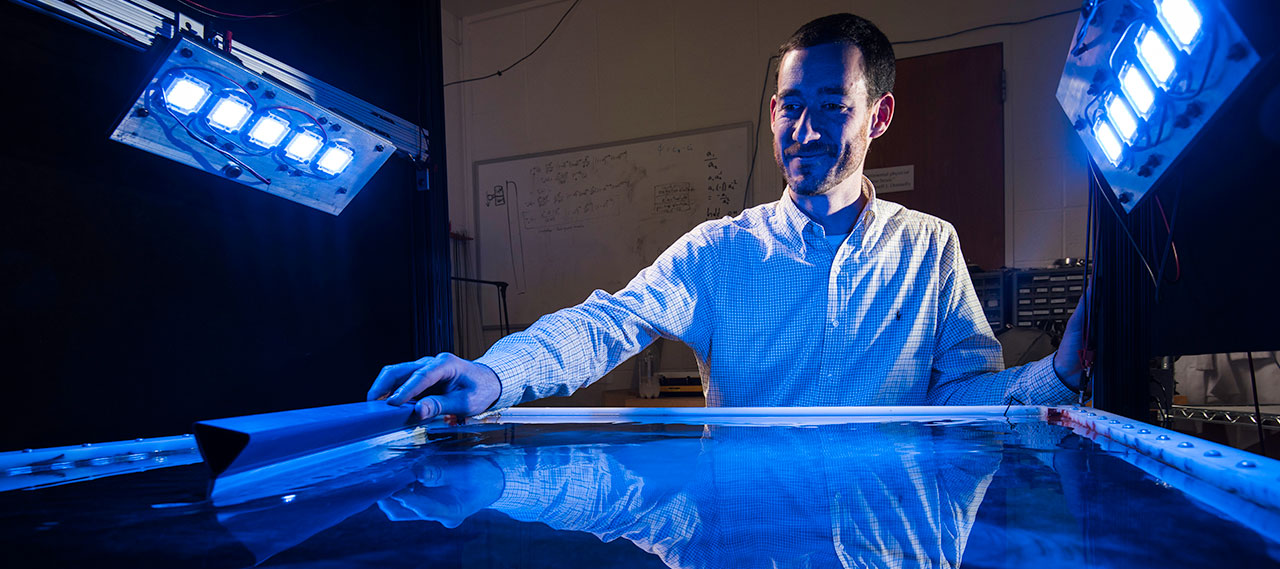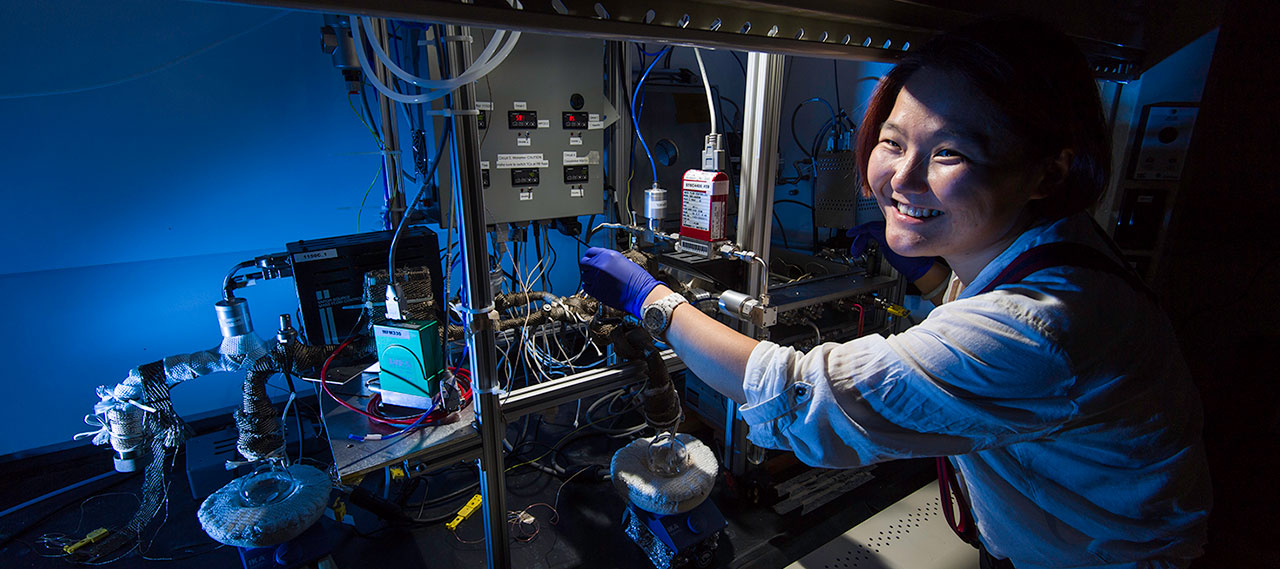Homepage
Undergraduate
Complete a minor in materials science or take related coursework, cross-listed by parent department.
Graduate
Our flexible MS and PhD programs in materials science let you align with the department closest to your academic and research interests.
Research
Leveraging the scientific and engineering expertise and resources of the Hajim School, the School of Arts and Sciences, the School of Medicine and Dentistry, and the Laboratory for Laser Energetics.
Rochester’s Quest for New and Advanced Materials
Biomedical materials, quantum materials, nanomaterials—these are just the start. At Rochester, there are more than 60 faculty spanning nearly a dozen science and engineering departments support research, academics, and entrepreneurship in materials science. Plus, our collaborations with the University’s nearby Medical Center, Laboratory for Laser Energetics, and Institute of Optics create unparalleled opportunities to accelerate material advances.
Feature Story
Harmful ‘forever chemicals’ removed from water with new electrocatalysis method
A novel approach using laser-made nanomaterials could lay the foundation for globally scalable remediation techniques.
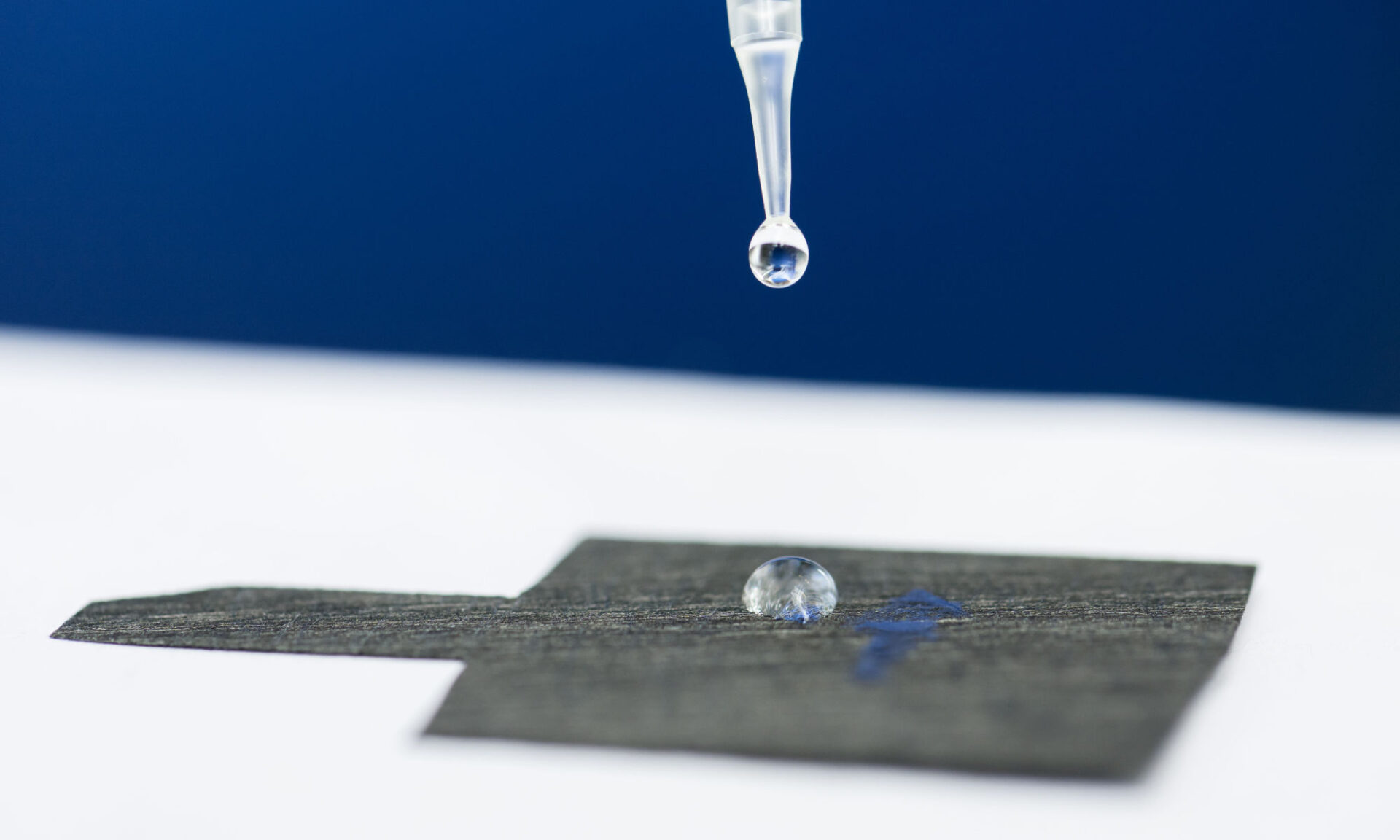
Medicine and Dentistry
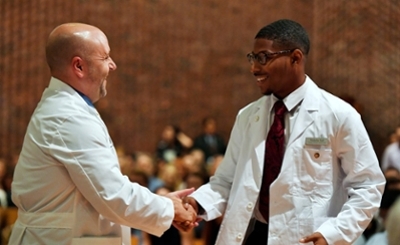
A nucleus of medical research, education, and patient care, the School of Medicine and Dentistry is a five-minute walk from the River Campus. Materials science students at Rochester conduct research alongside faculty in the departments of dermatology, microbiology and immunology, or biochemistry and biophysics.
Laser Energetics
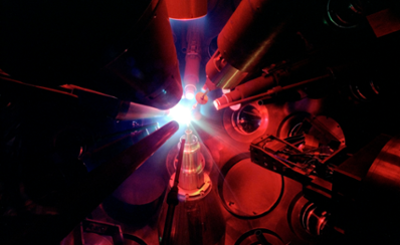
The Laboratory for Laser Energetics is the largest university-based U.S. Department of Energy program in the nation—it houses the most powerful laser systems found at any academic institution in the world. At Rochester, materials science students and researchers regularly harness these unique resources.
Optics
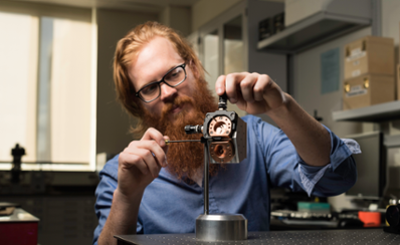
The Institute of Optics was the nation’s first optical science, engineering, and design program—and it remains at the vanguard of optics education and research. Materials science research in this domain focuses on the properties of materials important to optical applications, including nanophotonics.

Symposium
Annual Materials Science Symposium
Each year in the spring we bring together researchers, experts, and other leaders working at the frontiers of a specific topic or approach within materials science broadly. Recent symposium themes have included:
- Biologically engineered materials
- Biomimetic and anti-fouling interfaces
- MEMS (micro-electro-mechanical systems) and membranes

